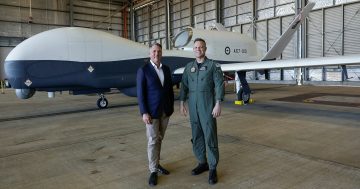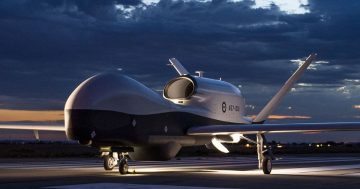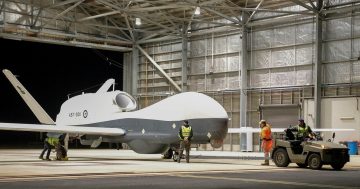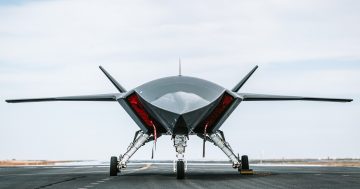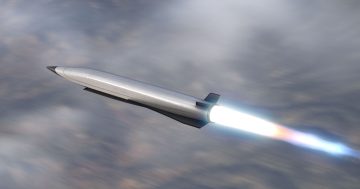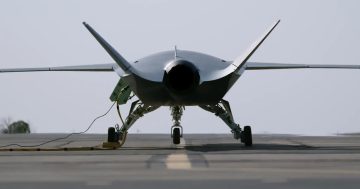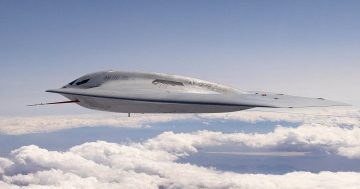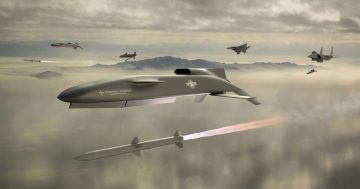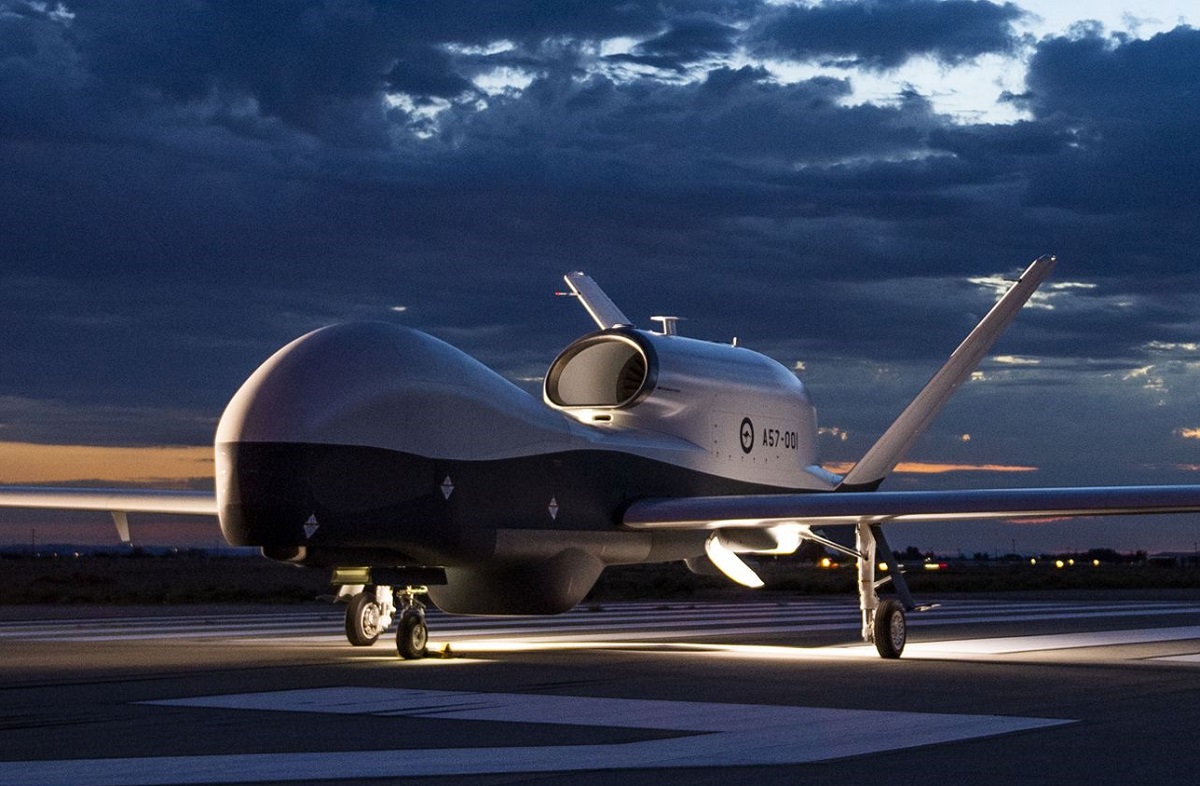
The RAAF’s first MQ-4C Triton was rolled out in September 2022 and was due to have flown by mid-2023. Photo: Northrop Grumman.
The first Northrop Grumman MQ-4C Triton uncrewed high-altitude maritime surveillance aircraft for the Royal Australian Air Force (RAAF) has made its maiden flight from the company’s Palmdale facility in California.
At the time of writing, flight tracking apps showed the aircraft – callsign TRITN01 – descending along an elongated orbital track over central California from an altitude of 54,100 ft and a ground speed of 336 knots (622 km/h). It took off from Palmdale at about midday local time (7:00 am AEDT) and has been in the air for over four hours.
Australia has four MQ-4Cs on order from an original requirement of up to seven aircraft. The glider-like Triton has a single jet engine and a long wingspan of about 130 ft, and is able to fly at 55,000 ft for missions of 28 hours duration or longer.
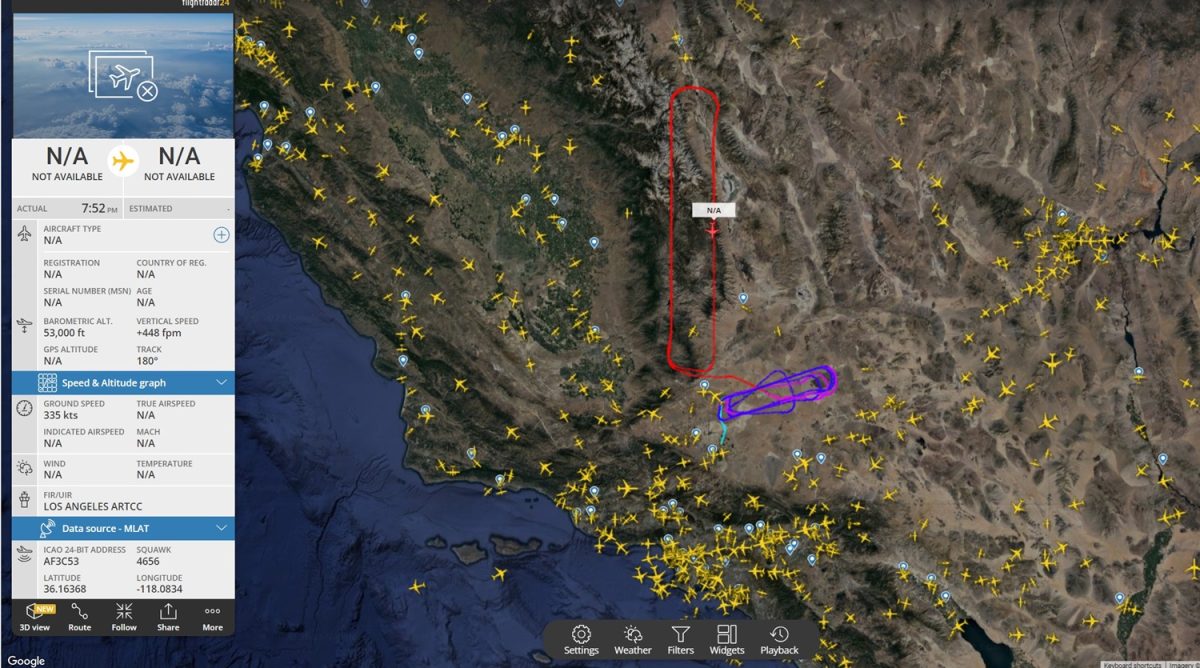
The RAAF’s first Triton flight as it appears on flight tracking apps. Image: Flightradar24.
It carries powerful radar, optical and electronic sensors that allow it to see huge distances in multiple spectrums from high altitude, and can relay that information in near real-time via satellite to Australian and allied airborne, land-based or maritime systems.
Following a flight test and system verification program, the first RAAF Triton is expected to be delivered to Australia in late 2024. The aircraft will be primarily remotely based at and operated from RAAF Base Tindal near Katherine in the Northern Territory, while its pilots, sensor operators and No 9 Squadron headquarters will be located at RAAF Edinburgh in Adelaide.
The RAAF is a cooperative development partner on the Triton program with the US Navy, so has had engineers embedded in the US throughout the program’s development.
The US Navy declared an initial operational capability (IOC) of its Tritons in September with three aircraft based on the island of Guam in the western Pacific. But in recent months, the US has also dramatically reduced its planned orders from 68 to fewer than 30 aircraft.
Original Article published by Andrew McLaughlin on Riotact.


